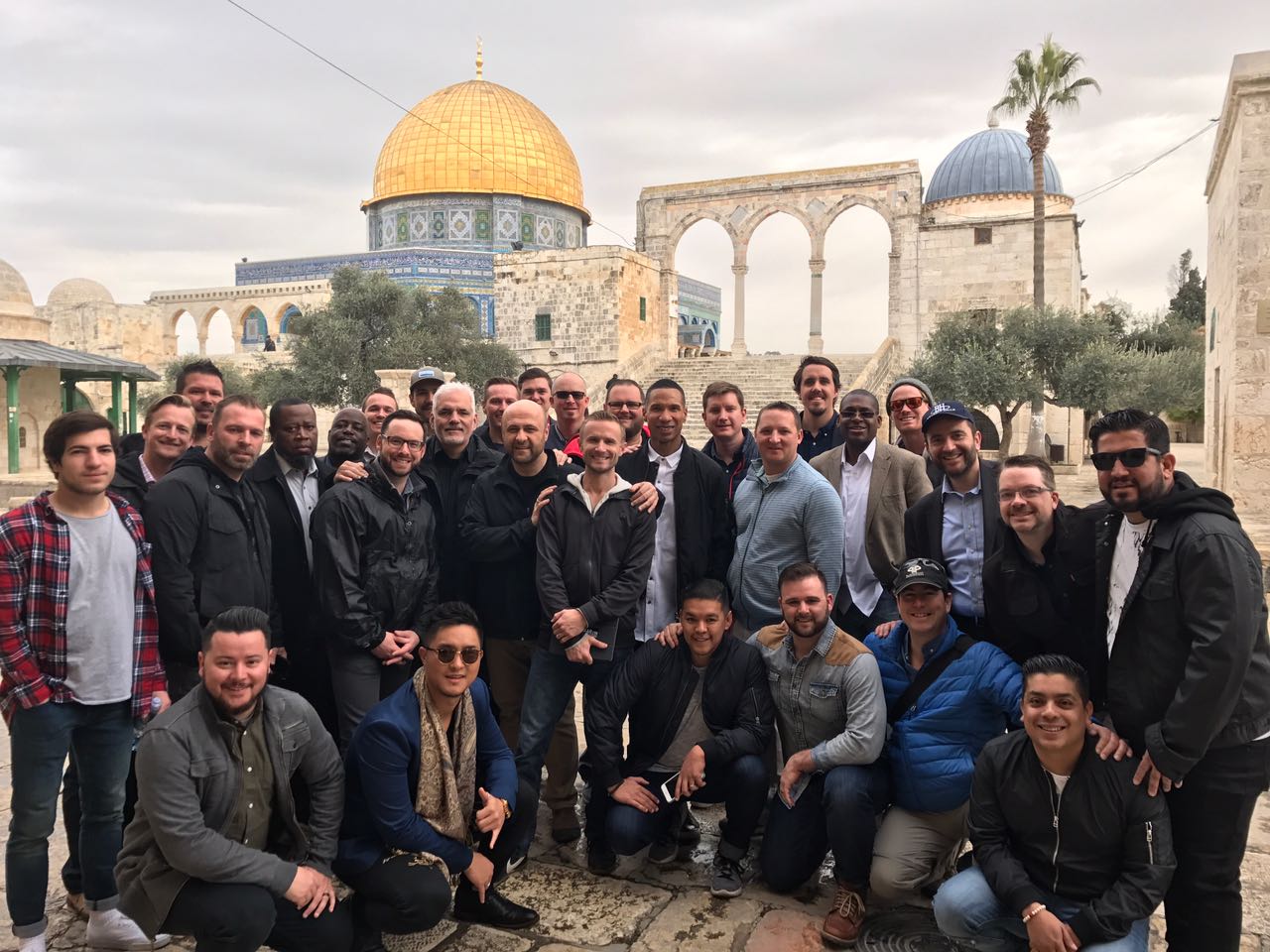MY FIRST VISIT TO TEMPLE MOUNT

This past Monday I arrived in Israel to begin a whirlwind tour with thirty millennial Evangelical pastors from across the United States, all but two of them on their first visit to Israel.
The experience was both breathtaking and heartwarming. None of the pastors on the mission was a seasoned “Christian Zionist”, but bubbling below the surface of each and every one of them was a passion for the Bible, for the land of the Bible, and for the People of the Book, that puts our own religious feelings towards Israel to shame.
We have a lot to learn from our Christian brethren, and we would do well to learn it.
There were many highlights on the trip – too many to fit into this short dispatch. Instead I would like to use the limited space to focus on Jerusalem, and particularly our visit to Temple Mount, and alongside that to reflect on the ongoing debate and discussion in diplomatic circles and the media about moving the United States Embassy to Jerusalem.
You can hardly swing a cat in the holy city and its environs without hitting a holy shrine or an archaeological dig that is deeply meaningful to one religion or another – or, indeed, to all of them. We visited many such holy sites, and must have certainly passed many others unknowingly – seemingly meaningless piles of collapsed masonry covered in moss flashing past our eyes as we drove from one place to another.
Some of the sites we visited seemed more authentic than others, and a spiritual vibe seemed to animate those places, while others seemed contrived and inauthentic, leaving us unmoved and occasionally disappointed.
There was only one site we visited that made us all angry. On Wednesday morning we patiently waited in line at the security booth next to the Western Wall, and after a few minutes walked up the temporary wooden walkway onto Temple Mount. Our hour-long visit was an exercise in frustration and disillusionment.
We were all immediately struck by the shabby condition of this ancient site. Believe it or not, wherever you look it is dirty and grubby, and all the buildings on Temple Mount are in an absolutely dreadful condition – including, shockingly, the Al-Aqsa mosque, ostensibly the third holiest prayer shrine of the Islamic faith, and the iconic, golden-domed Dome of the Rock.
I have seen Temple Mount from afar thousands of times, but this was my first-ever visit, and it was the first time I was able to take a closer look at the holiest geographic location of Judaism. What a disappointment it turned out to be.
I must admit I had always imagined Temple Mount as an awesome and impressive place, and always longed to visit and spend time there. Over the years I have had the privilege to visit many well-known national heritage sites all over the world – in countries such as Italy, France, Greece, China, and of course countless sites in Israel – all of them revered and cherished, protected and lovingly treated by their national or religious patrons, who clearly see their own collective dignity and beauty reflected in the way their precious monuments appear to visitors and outsiders.
Like you, I have seen pictures of Mecca and Medina, the two holiest shrines of Islam. In Mecca, the Masjid al-Haram – the “Great Mosque of Mecca” – has gone through numerous facelifts, and is purported to be one of the most beautiful and well-maintained religious shrines in the world. In Medina, the Al-Masjid an-Nabawi – the “Prophet’s Mosque – although more modest than its Mecca counterpart, is a wonderful prayer space, visited by most of the annual Hajj pilgrims after their time in Mecca.
Considering that the Al-Aqsa Mosque on Temple Mount is the third holiest shrine on the Muslim holy shrine shortlist, one would imagine its treatment and appearance would reflect the care and attention devoted custodians pour into the two primary mosques of Islam in Mecca and Medina. Similarly, the Mosque of Omar, or the “Dome of the Rock”, whose copper cupola dominates the Jerusalem skyline.
How shocking is it, therefore, that these two ancient shrines are so dilapidated, and the plaza on which they stand so badly maintained. As one of the pastors put it to me – how hard would it be to pressure-wash the flagstone floor of the Temple Mount plaza once a week so that it looked clean and fresh? And why are there discarded chairs and sun umbrella stands standing abandoned in a Muslim holy site?
The Western Wall may represent the sad remnant of our destructed Temple, but the depth of spirituality and dignity of this diminished spot far outshines the atmosphere on Temple Mount. Spiritually the place seems dead. No joy. No love. No warmth. Only stony looks from disgruntled Waqf security guards listening and watching for us to say or do something we shouldn’t.
It is a vast large space with an empty soulless feeling. Jerusalem everywhere else is a bustling city, full of spiritual yearning and religious longing. Temple Mount is the opposite – stagnant and negative, a spirit dampener, populated by dog-in-the-manger people who just don’t want to share it, or let anyone else get anything out of it.
For me it hammered home the point of how important it is for the world to recognize Jerusalem as the capital of Israel, and for the US Embassy to move there as soon as possible. My abiding impression was that for Muslims the Temple Mount site only has importance in terms of preventing the march of prophecy from progressing into the Messianic era.
Our mission must be to override our fear of facing up to the antagonism of those who deny reality. This is not and has never been about Islamic claims on Temple Mount. This is all about the forces of evil trying to thwart God’s plan for humanity under the fraudulent guise of religious respect.
Not to end on such a sour note, let me conclude by saying that now that I have been onto Temple Mount and seen it so decrepit, and so devoid of God’s presence, I feel elated and happy rather than depressed and miserable – just like Rabbi Akiva, who the Talmud records (Mak. 24b) told his friends after they had all observed the desolation of Temple Mount, that he felt joyous knowing that the prophecies of destruction had come to pass, and that consequently, so too would the prophecies of salvation, liberation, redemption and resurrection.
(The United States Embassy relocated from Tel Aviv to Jerusalem on May 14, 2018, the 70th anniversary of the creation of the modern State of Israel.)

